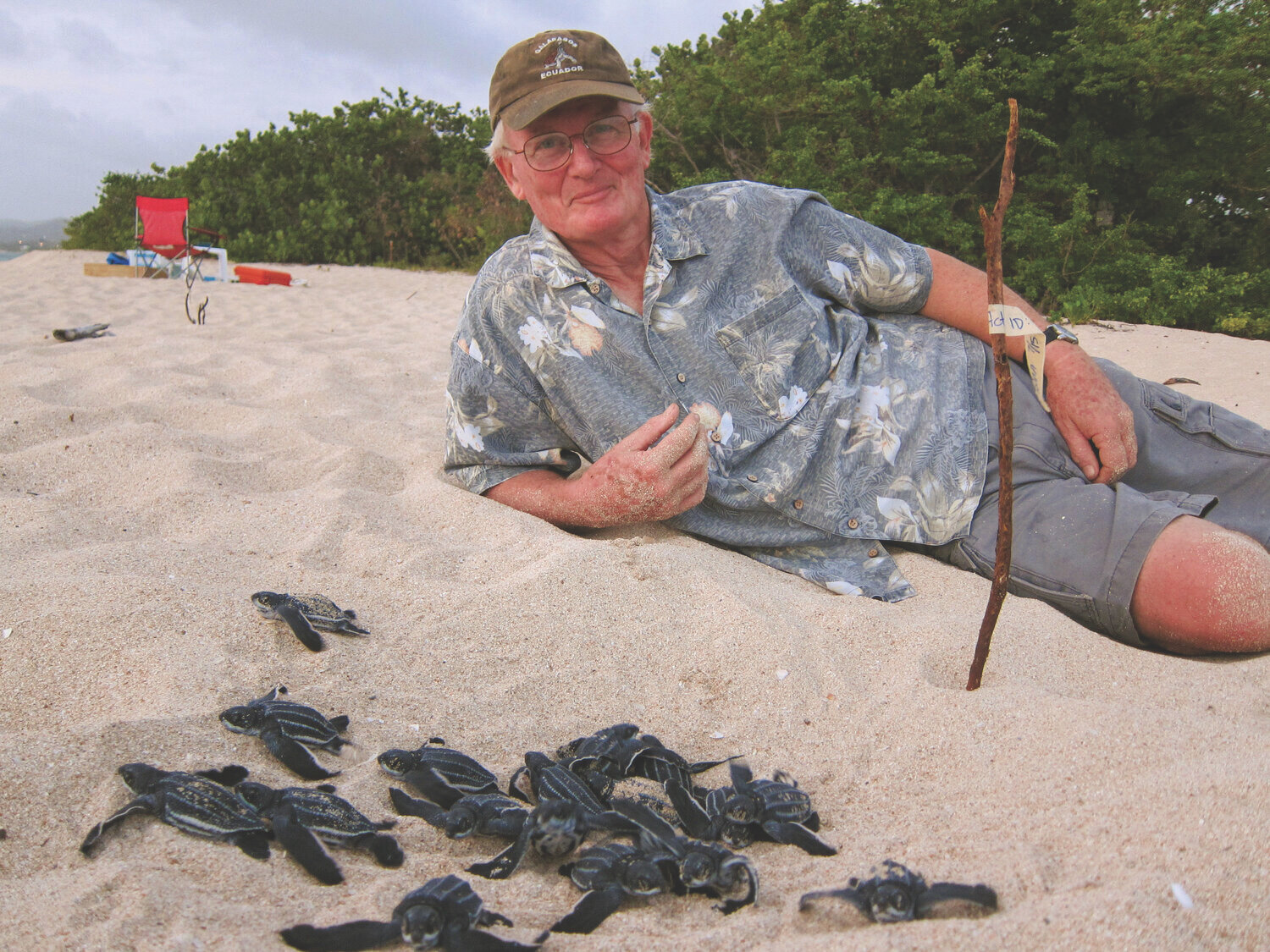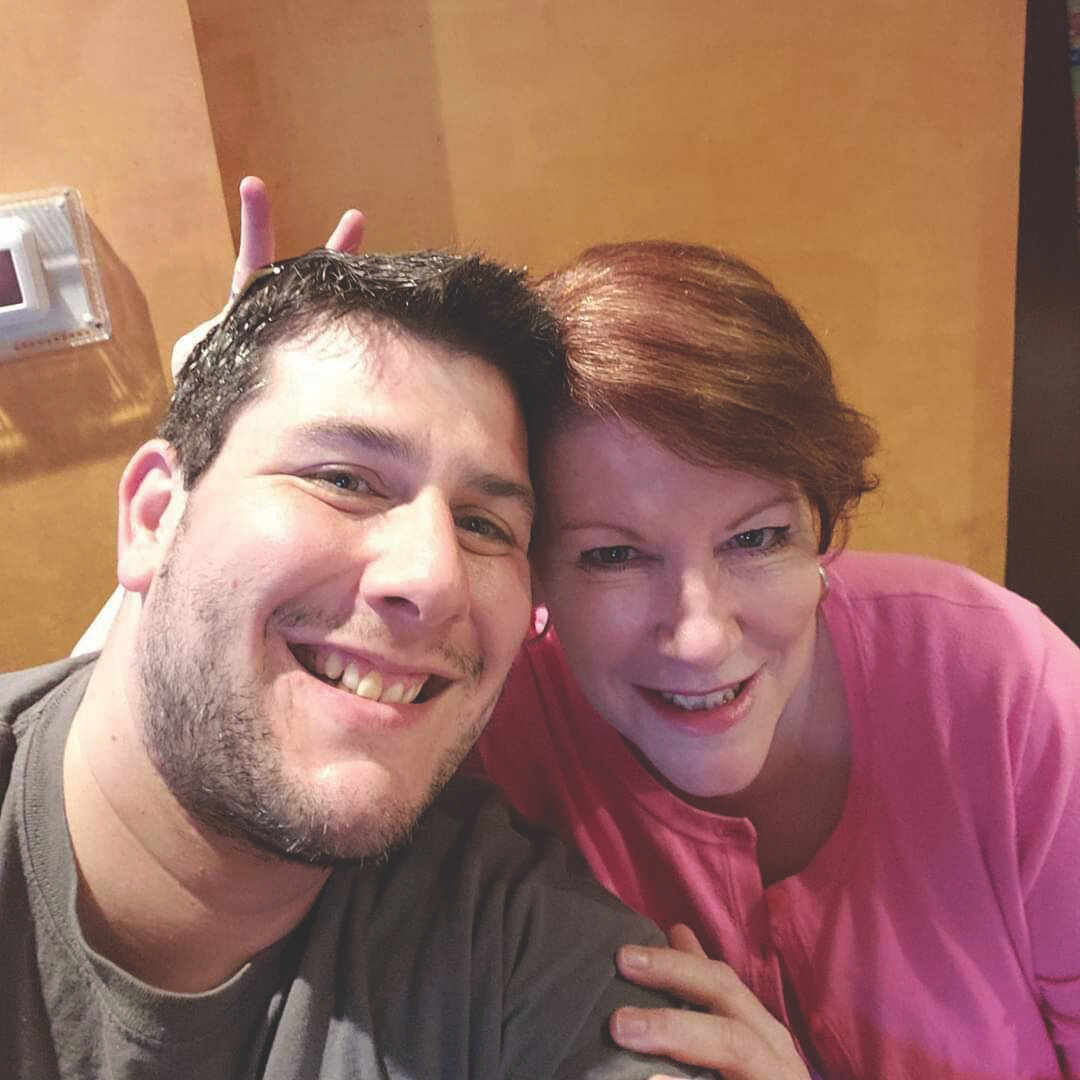In Memoriam
Beyond the vast global drama and loss of human lives wrought by COVID-19 since the previous volume of SWOT Report, our clan has seen the passing of a shocking number of our own brothers and sisters, including some of the most stalwart and iconic leaders our field has ever known. Please take a solemn moment to consider not only how the following seven people changed the world and advanced the field of sea turtle conservation, but also how they influenced us all as friends and colleagues. Recapture the special moments you may have had with each of them, and consider how to cherish all the moments we will continue to share among those of us who remain.
Special thanks go to Ken Broadbent, Ray Carthy, Peter Dutton, Faye Frazer, Kate Mansfield, Judi Reichart, Manjula Tiwari, and Blair Witherington for assisting with the content that follows.
HENK REICHART (1926–2020)
Henk is best known in the sea turtle community for his work in the 1970s as director of Suriname’s foremost nature group, Stinasu, where he led a sea turtle program with another iconic Dutchborn scientist, Joop Schulz. We owe much of our basic understanding about temperature–dependent sex determination and sea turtle–based ecotourism to that early research. Henk was also among the first to draw attention to bycatch as a serious threat, and he promoted the use of turtle excluder devices in the Guianas. A former pro soccer player (Blauw-Wit Amsterdam), engineer, wildlife manager, pilot, and multilingual problem solver, Henk was known for his community-based efforts to build Suriname’s (and later Indonesia’s) system of protected areas, which have resulted in millions of hectares of rainforest remaining intact to this day. Driven from his beloved Suriname by civil war in 1984, Henk led equally heroic conservation efforts for World Wide Fund for Nature Indonesia, then returned to help rebuild Stinasu before retiring to California. Revered as one of the founders of conservation in Suriname, “Sir Henk” was knighted by Prince Bernhard of the Netherlands in 1994; bestowed with an International Sea Turtle Society Lifetime Achievement Award in 2015; and blessed with the love, respect, and admiration of several generations of sea turtle and nature lovers worldwide.
JACK MUSICK (1941–2021)
In a posthumous tribute, colleagues remarked that “Jack’s entire life was a lesson in excellence and the many spiritual and intellectual rewards to be gained by following your bliss no matter where it leads.” During a career as a marine scientist, conservationist, and professor at the Virginia Institute of Marine Science that spanned four decades, Jack built a sea turtle program that advanced satellite tracking studies and much more. But his curiosity and intellect did not end with turtles. A nature polymath, Jack authored 170 papers and 22 books spanning taxa from fish, to cetaceans, to sea turtles. He advised, inspired, and entertained thousands of students and was a perpetual source of engaging stories and jokes, melded with sage advice and wisdom derived from vast and varied life experiences. His smile was disarming, and his wit and intelligence were without bounds. In a single conversation, he could move adeptly from sea turtle protection to whale taxonomy, next expertly segue to American eel biology, and then end with a fish story from his latest angling adventure. He was the life of any party, meeting, or symposium and will be fondly remembered by the people whose lives he touched, especially the students he mentored, who are his legacy in marine conservation.
PETER PRITCHARD (1943–2020)
Peter was the world authority on turtles, tortoises, and terrapins, both extant and extinct, and his impact on modern chelonian biology and conservation is unparalleled. Besides conducting extensive fieldwork on all continents, he wrote numerous classic turtle books and publications, established a permanent sea turtle project in Guyana, and built one of the world’s largest turtle and tortoise museum collections, containing more than 14,000 specimens and more than three-fourths of the world’s turtle species. He was recognized as a “Champion of the Wild” by Discovery TV, “Hero of the Planet” by Time Magazine, and “Floridian of the Year” by the Orlando Sentinel. He also received the prestigious Behler Turtle Conservation Award from the International Union for Conservation of Nature Species Survival Commission’s Tortoise and Freshwater Turtle Specialist Group, as well as the International Sea Turtle Society’s Lifetime Achievement Award and the Turtle Conservancy’s Conservation Achievement Award. Moreover, three turtle species have scientific names honoring Peter. His wisdom, kindness, humility, charm, humor, and generosity of spirit left an indelible mark on the lives of many, and his curiosity and love for life, turtles, and people made him a giant among men.
ALAN BOLTEN (1945–2021)
Although lives are fragile, deeds are resolute. In his work to conserve sea turtles, Alan Bolten understood this consequence of vulnerability and the value of persistence. To reach sea turtles, Alan took a meandering path through entomology, tropical botany, and Africanized honey bees to meet a student of Professor Archie Carr named Karen Bjorndal, whom he married. The partnership began an eminently productive academic relationship between Alan, Karen, and sea turtles. Yet the results were more than academic. Many fall in love with sea turtles and then feel compelled to save them. Alan seemed to directly fall in love with saving sea turtles. This difference in emotional imperative drove the directness and effectiveness of Alan’s conservation work with Karen, which culminated in a ban on Bahamian turtle harvest, fishing gear changes to reduce sea turtle bycatch, and contributions to how sea turtle life histories unfold, with profound implications for sea turtle conservation. In search of conservation solutions, Alan attracted diverse partners, conducted pivotal research, and interpreted that influential work for those who might make a difference. Alan leaves not only a great legacy of professional accomplishment and scientific leadership, but also one of impassioned and persistent connections among colleagues, students, and friends.
NAT FRAZER (1949–2020)
A well-loved, highly respected, and vital member of our community, Nat was a “Georgia Turtle Boy,” whose passion for sea turtles was born in 1979 when he saw his first loggerhead on Little Cumberland Island. During the ensuing decades, he presented and published prolifically on sea turtle conservation, with a strong focus on growth and population modeling. He jokingly claimed to have a “firm grasp on the obvious,” and he helped us to think and see in new ways through his commonsense, thoughtful, yet scientifically rigorous observations and moving speeches and essays, including “Sea Turtle Conservation and Halfway Technology: Confessions of an Academic Parasite” and “Zen and the Art of Sea Turtle Conservation.” Those creations ultimately earned him the affectionate moniker of “Dr. Cosmic.” Nat’s good humor, optimism, and passion for learning and educating enhanced the lives of countless students and colleagues throughout his long and storied career as a researcher, professor, lecturer, and university administrator. In his final speech, “Hope and Optimism,” he shared one of his deepest truths: “[T]here are things that the Earth and the universe can teach us if we will be quiet and pay attention.”
DONNA BROADBENT (1957–2020)
Donna was not working actively on the front lines of conservation policy, innovative field research, or ecological syntheses, but she was the unifying element for almost every major sea turtle meeting held in North America in the past decade and a half. As event coordinator for the International Sea Turtle Society and the Southeast Regional Sea Turtle Network, Donna planned our conferences and managed venues, and she quickly engaged us with her incredible level of organization, professionalism, and initiative. In her years of working with our community, she learned a lot about us as individuals and as a group, and she developed a deep fondness for our organizations, history, culture, and goals. This affection translated into an exceptional level of care and attention at our meetings and her commitment to making sure that every attendee had a wonderful and memorable experience. Donna’s behind-the-scenes magic and her service, positivity, and friendliness will be remembered by the sea turtle community, and her legacy will live on through each symposium that we hold and attend.
MIGUEL DONOSO (1961–2021)
Miguel spent much of his life at sea on fishing boats and research vessels, where he observed, collected, and assessed everything from swordfish to marine mammals and sea turtles. His keen eye and curiosity first alerted the world to the extensive presence of sea turtles in Chilean waters. In the 1990s, Miguel spoke to an audience of skeptical fisheries experts about clusters of “small brown turtles” that he commonly saw in the open ocean, an observation that led to defining a conservation hotspot that helped protect juvenile loggerheads from longline. He also helped to create Red Laúd OPO (Océano Pacífico Oriental), the leading network of scientists dedicated to the recovery of the Eastern Pacific leatherback. Over his lifetime, Miguel cultivated an extensive network of ocean experts, and he gained the confidence and trust of countless fishers and communities in his efforts to help sea turtles. His friendly demeanor and love for food, song, dance, and soccer will be remembered by all who knew him, and his life is a testament to the importance of genuine human relationships in advancing conservation.
This article originally appeared in SWOT Report, vol. 16 (2021). Click here to download the complete article as a PDF.







